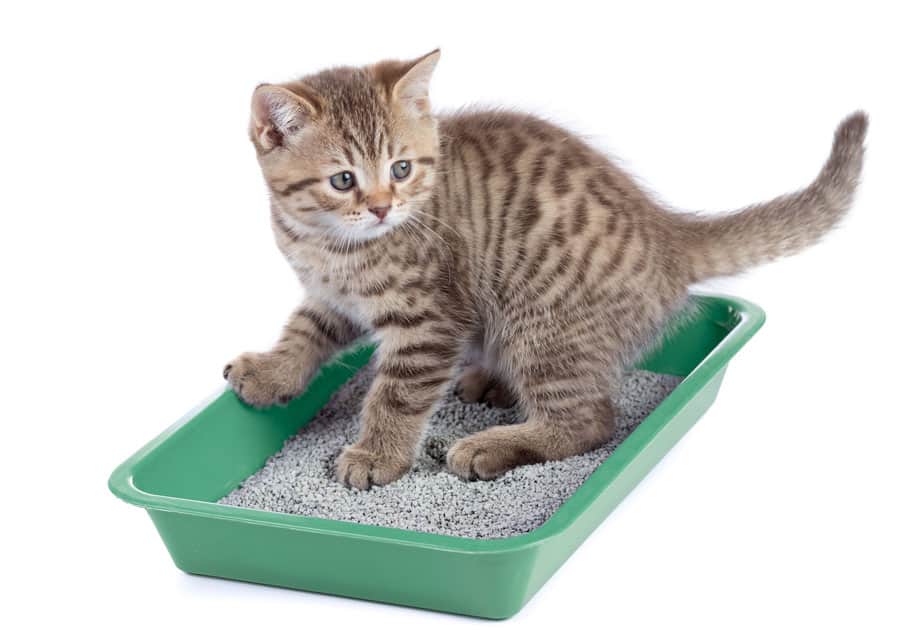Ready to adopt a cat but puzzled over toilet training? Don't worry, you're not alone. Navigating through a cat's unique bathroom habits can be a challenge. But, hold that thought! What if there's a step-by-step guide to help you through this journey? Here it is.
Our practical guide is your key to the secrets of litter box training. We'll also cover topics like why cats choose to dig and cover up their waste, what drives these behaviors, and, most importantly, how you can teach your new friend to use the litter box.
Are you ready? It's time to discover, understand, and implement.
Understanding Your Cat's Bathroom Behavior
Let's start by understanding the basics of this behavior. Cats have a fascinating approach to handling their business. They find a spot, dig, do their business, and often cover it up. But what drives this behavior?
Have you observed a cat doing its business outdoors? It could be a pet cat that ventures outside or perhaps a wild cat. They follow a common pattern:
Firstly, they find a place where they can dig. They examine the area, find the perfect spot, and start creating a shallow hole. After some diligent digging, they inspect their work. Once they're satisfied, they position themselves over the hole, and nature takes its course. Once done, the cat takes a moment to sniff its handiwork and only then begins to camouflage it with dirt.
Documenting a cat doing its business outdoors is no easy task, but we managed to find a couple of videos showing the process:
Though the videos were shot from a considerable distance, they still offer insight into the routine. The cats take their time digging, checking the hole, and then covering up their work meticulously after they finish.
It's a fascinating process, rich with nuances that'll help you teach your cat to use the litter box. So, let's take a closer look.
Why do cats use litter boxes?
Large cats such as lions don't usually bury their waste. They have no one to fear. They actually want to announce their presence and leaving your feces or urine markings around is a great way to do that! According to scientific sources, cats that hide their feces and urine are in fact doing the opposite of territorial marking.
A wild cat with a nest of kittens is more likely to cover up after herself. She's trying to protect her kittens by keeping a low profile. Who is she protecting them from? Probably from two sources of danger:
- Opportunistic predators such as coyotes, jackals, or hyenas.
- Dominant male cats of her species.
Both could be a potential threat, trying to kill the kittens to feed on them, or to make the female go into heat again. Either way, it's best to keep young kittens hidden away and that means burying feces.
In a sense, our domestic cats' habit of using the litter box is a reflection of the same behavioral pattern. Our cats are relatively small - compared to wild cats or even to the humans they live with.
It makes sense for them to follow the ancient drive of covering up their tracks. Just to stay on the safe side. In that sense, using the litter box is instinctive for our cats.
Do all cats instinctively use the litter box?
Yes! Well, mostly. Almost all domestic pet cats do use the litter box instinctively. In fact, rescuers will tell you that when you bring in kittens and provide them with a small litter box, they will start using it right away.
So why are we even writing about how to teach a cat to use a litter box?
Good question. Just because cats have a strong instinct to use it, doesn't mean they always do.
As a cat owner, you do need to know how to do the following:
- Introduce a new cat to his or her litter box
- Introduce your cat to a new box
- Teach a cat to use the litter box after he or she went outside the box

New cat? Here's how to teach a cat to use a litter box
With a new cat, it's not so much that you'll have to teach a cat to use a litter box. It's more about how to introduce it to her the right way. The important thing is to provide a cat with access to a litter box that's set up properly.
When you first bring a new cat home, don't just let her wander off into new territory. During the first few days, keep Kitty in a safe room where she can explore without feeling overwhelmed.
This will be her first interaction with a litter box in her new home. You may be planning on placing the box in your guest bathroom or even the basement, but for now, it must be in the cat's safe room.
As a rule, litter boxes should be placed away from feeding locations. In this case, you're keeping them in the same room, so make absolutely sure the box is as far away from feeding dishes as possible.
Once it's time to introduce the cat to the rest of your home, keep the litter box in her safe room in the same place and add an additional one in the new location. Use the same type of box and the same litter. Put some of the used litter from the safe room into that box.
Do not remove the safe room litter pan until you know for sure that your cat is regularly using the new box. That's it in a nutshell, that's how you teach a cat to use a litter box in her new home. 99% of the cats will do just fine with this approach.
Same cat but a new box - here's what to do
How to teach a cat to use a litter box often covers this scenario. Your pet cat of many years has been using a certain type of litter pan with no issues but now you want to introduce him or her to a new type of box.
Let's say Kitty has always used a standard open box but now you want to try a covered cat litter box or a self cleaning litter box. How to go about that?
Cats are creatures of habit so making changes in their routine should never be taken lightly. If you need to change the litter box, do it gradually. Don't just swap one box with another (and give your cat a shock next time she goes to the toilets).
Instead, place the new box next to the old one and keep both of them there until your cat regularly uses the new box too.
If you're switching to a covered litter box, keep in mind that some cats are turned off by the flap door. One way to go about it is to take that flap door off, at least until the cat regularly uses the box.
How to teach a cat to use a litter box - again
If you're cat has been using the box all her life and suddenly begins having "accidents", you may want to re-train her to use the box again, right? Well, not exactly. Using the box is not about "training" it's about providing a healthy cat with the right setup for litter box use.
And note the word "healthy" because some health issues can cause a cat to go outside the box. Don't try to teach or train your cat before you know for sure what's causing her to avoid the box, to begin with.
Litter box avoidance issues can be a very serious thing. They can reflect a health problem, issues with litter box setup, or just too much stress in your cat's life. Don't just shoot in the dark.
Educate yourself about the issue and try to figure out why Kitty is avoiding the box. This excellent guide about litter box problems in cats can guide you through the process.
If you found this guide helpful please help us spread the word by sharing on social media. We even prepared this image for you to use on Pinterest:




